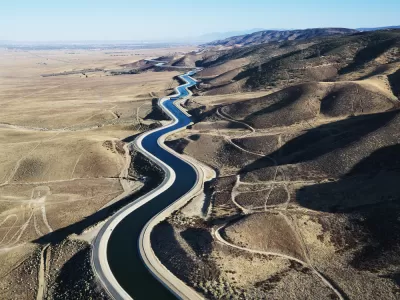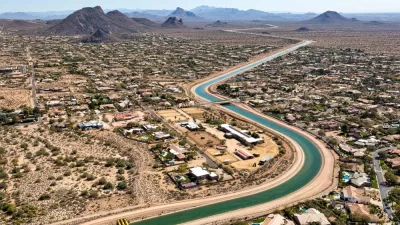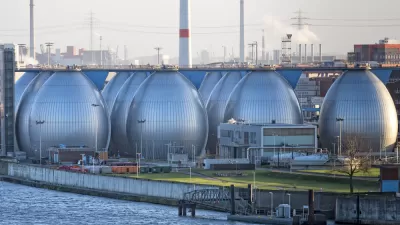With California’s water supply expected to drop by 10 percent in the next two decades, Governor Newsom’s strategy calls for conservation and increased investment in water collection, storage, and desalination infrastructure.

A new plan issued by California Governor Gavin Newsom outlines a strategy for reducing the state’s water use in advance of a projected 10 percent decrease in the state’s water supply. As reported by Ian James in the Los Angeles Times, “The plan focuses on accelerating infrastructure projects, boosting conservation and upgrading the state’s water system to match the increasing pace of climate change, securing enough water for an estimated 8.4 million households.”
“Drought is a permanent fixture here in the American West and California will adapt to this new reality.” — Gov. Gavin Newsom
As stated in the plan, “Targeted state funds and focus will support local efforts to conserve, capture, recycle, and de-salt enough water to allow California communities to prosper in a hotter, drier climate.” The strategy calls for expanding water storage capacity and groundwater recharge, speeding up wastewater recycling projects and runoff capture, and investing in desalination. “The plan includes targets and timelines, such as expanding desalination of brackish groundwater to 84,000 acre-feet by 2040, and boosting the state’s capacity to capture storm water by 500,000 acre-feet by 2040. For comparison, the total annual water use of Los Angeles is nearly 500,000 acre-feet.”
In May, California’s Coastal Commission rejected a governor-backed proposal to build a desalination project in Huntington Beach, dealing a blow to Newsom’s plans to expand desalination in the state. To date, 12 seawater desalination facilities operate in the state, with three proposals for new facilities making their way through the system.
FULL STORY: With California expected to lose 10% of its water within 20 years, Newsom outlines urgent action

Study: Maui’s Plan to Convert Vacation Rentals to Long-Term Housing Could Cause Nearly $1 Billion Economic Loss
The plan would reduce visitor accommodation by 25,% resulting in 1,900 jobs lost.

North Texas Transit Leaders Tout Benefits of TOD for Growing Region
At a summit focused on transit-oriented development, policymakers discussed how North Texas’ expanded light rail system can serve as a tool for economic growth.

Why Should We Subsidize Public Transportation?
Many public transit agencies face financial stress due to rising costs, declining fare revenue, and declining subsidies. Transit advocates must provide a strong business case for increasing public transit funding.

How to Make US Trains Faster
Changes to boarding platforms and a switch to electric trains could improve U.S. passenger rail service without the added cost of high-speed rail.

Columbia’s Revitalized ‘Loop’ Is a Hub for Local Entrepreneurs
A focus on small businesses is helping a commercial corridor in Columbia, Missouri thrive.

Invasive Insect Threatens Minnesota’s Ash Forests
The Emerald Ash Borer is a rapidly spreading invasive pest threatening Minnesota’s ash trees, and homeowners are encouraged to plant diverse replacement species, avoid moving ash firewood, and monitor for signs of infestation.
Urban Design for Planners 1: Software Tools
This six-course series explores essential urban design concepts using open source software and equips planners with the tools they need to participate fully in the urban design process.
Planning for Universal Design
Learn the tools for implementing Universal Design in planning regulations.
City of Santa Clarita
Ascent Environmental
Institute for Housing and Urban Development Studies (IHS)
City of Grandview
Harvard GSD Executive Education
Toledo-Lucas County Plan Commissions
Salt Lake City
NYU Wagner Graduate School of Public Service





























